Go offline with the Player FM app!
Drowning
Manage episode 285904904 series 165883
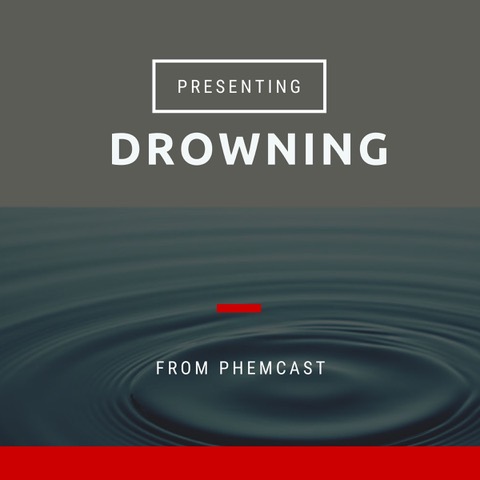
Some facts
Drowning is important: 1,000 people drown every day, 2 every 3 minutes, 41 per hour. It is the world’s 3rd leading cause of accidental death: 3.6 million people over 10 years.
Disease of youth
- 64% < 30 years old
- 43% < 15 years old
- 25% < 5 years old
Male: female ratio 2:1
In 40%, alcohol is on board
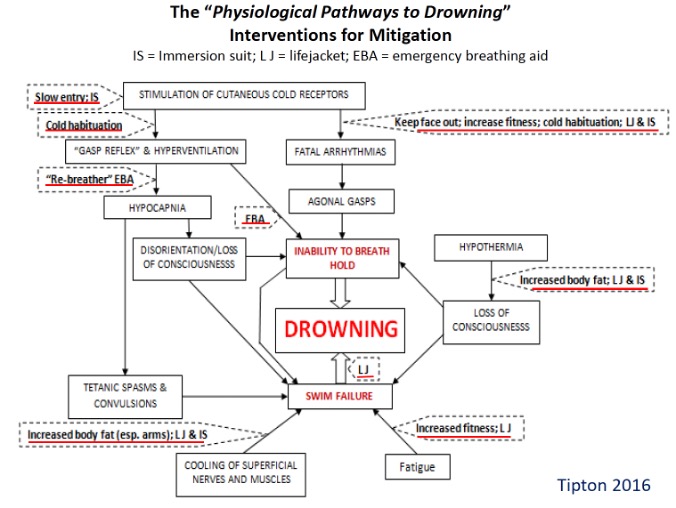
4 stages of Immersion associated with particular risk in drowning
Initial Responses/Sudden Death (first 3-5 min)
- Skin cooling
Short-Term Responses (5-30 min)
- Superficial Nerve and Muscle Cooling
Long-Term Responses (30 min +)
- Cooling of deep tissues
Post-immersion (during rescue)
- Collapse of arterial pressure
- Continued cooling
Fresh versus salt water drowning
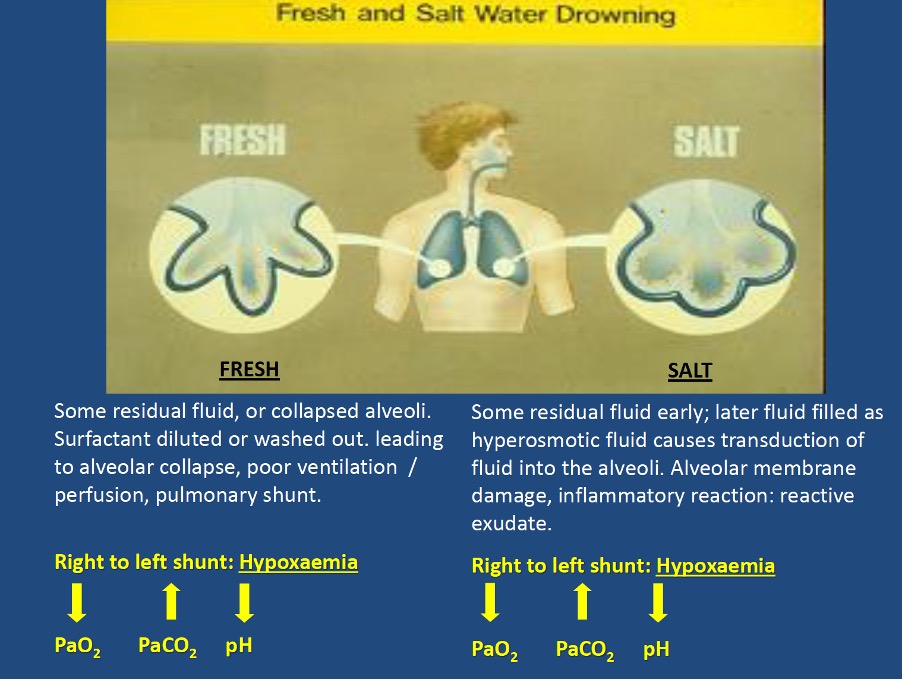
Lethal aspiration of salt water 22ml/kg (approx 1.5 litre), fresh water 44ml/kg

Be aware that drowning can take up to 4 hours – observe and watch for 6!
Prognostication
Better outcomes:
- Rescued and BLS commenced < 5-10 min
- Children
- Those who have not aspirated
- Water temperature < 10 oC, core body temperature 33-35 oC
- Neurologically intact on arrival at hospital
- Minimum blood pH > 7.1, blood glucose < 11.2mmol/L
- ROSC on scene
- Spontaneous ventilation in ED
Worse prognosis
- Risk of death or severe neurological impairment after hospital discharge is reported to be nearly 100% when the duration of submersion exceeds 25 min
- Following 30 mins resuscitation, if no signs of life, resuscitation is futile -> stop
It is important to remember that casualties who have entered water sometimes have access to a “bubble” of air – particularly if they had entered the water following a boating incident or were in a car at the point they entered the water. In these circumstances it is impossible to judge the point at which submersion has occurred.
What about cold water???
This is a regular point of discussion and concern. Water temperature is a key determinant: icy versus not. In the UK sea water is very unlikely to be icy or cold enough – however, small areas of water may well be, particularly in the winter months.
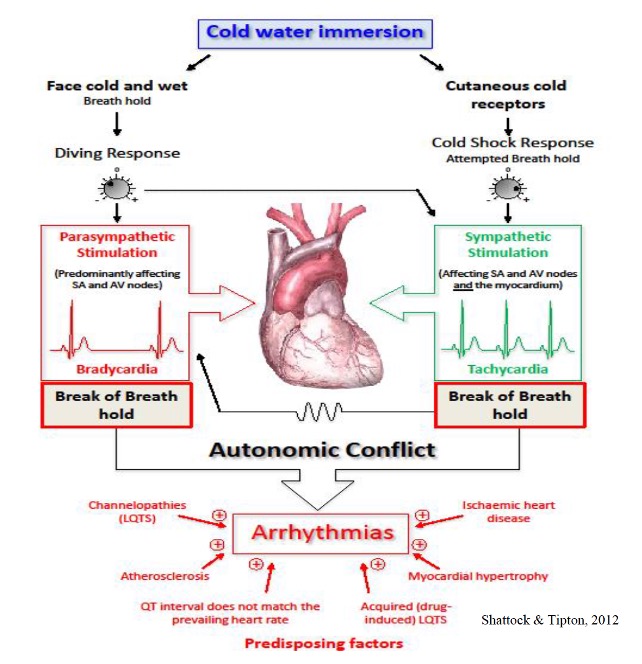
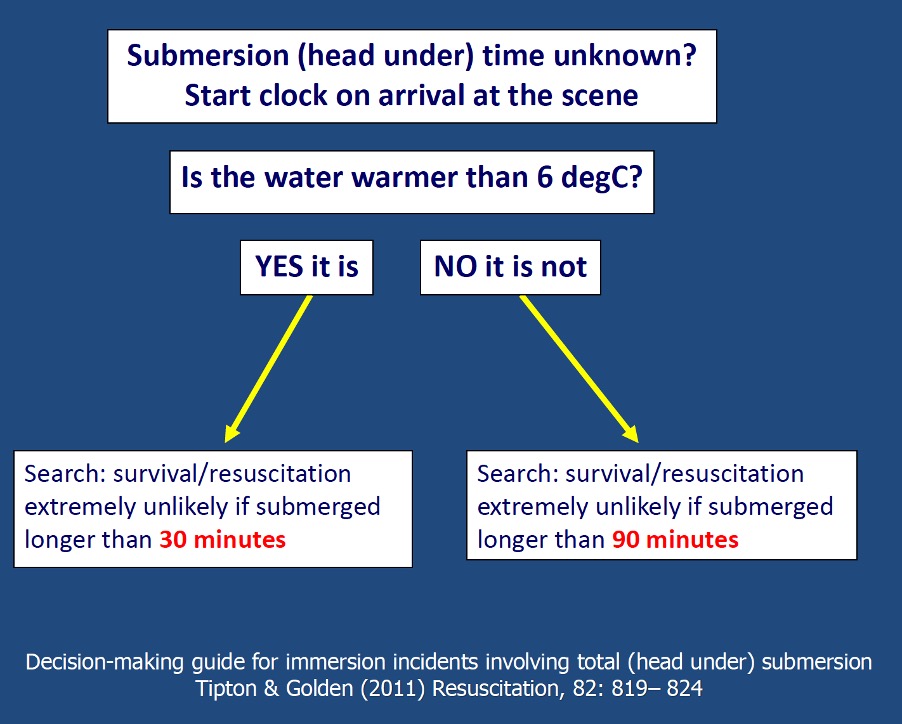
References
- Szpilman D, Bierens JJ, Handley AJ, Orlowski JP (2012) Drowning. New Engl J Med. 366: 2102–10.
- Tipton & Golden (2011). Decision making guide for immersion incidents involving total (head under) submersion. Resuscitation. 82: 819-824.
- Golden & Hervey, 1981
- Oakley & Pethybridge, 1997
- Tipton 2016
- Bierens 2014. Handbook of Drowning.
48 episodes
Manage episode 285904904 series 165883

Some facts
Drowning is important: 1,000 people drown every day, 2 every 3 minutes, 41 per hour. It is the world’s 3rd leading cause of accidental death: 3.6 million people over 10 years.
Disease of youth
- 64% < 30 years old
- 43% < 15 years old
- 25% < 5 years old
Male: female ratio 2:1
In 40%, alcohol is on board

4 stages of Immersion associated with particular risk in drowning
Initial Responses/Sudden Death (first 3-5 min)
- Skin cooling
Short-Term Responses (5-30 min)
- Superficial Nerve and Muscle Cooling
Long-Term Responses (30 min +)
- Cooling of deep tissues
Post-immersion (during rescue)
- Collapse of arterial pressure
- Continued cooling
Fresh versus salt water drowning

Lethal aspiration of salt water 22ml/kg (approx 1.5 litre), fresh water 44ml/kg

Be aware that drowning can take up to 4 hours – observe and watch for 6!
Prognostication
Better outcomes:
- Rescued and BLS commenced < 5-10 min
- Children
- Those who have not aspirated
- Water temperature < 10 oC, core body temperature 33-35 oC
- Neurologically intact on arrival at hospital
- Minimum blood pH > 7.1, blood glucose < 11.2mmol/L
- ROSC on scene
- Spontaneous ventilation in ED
Worse prognosis
- Risk of death or severe neurological impairment after hospital discharge is reported to be nearly 100% when the duration of submersion exceeds 25 min
- Following 30 mins resuscitation, if no signs of life, resuscitation is futile -> stop
It is important to remember that casualties who have entered water sometimes have access to a “bubble” of air – particularly if they had entered the water following a boating incident or were in a car at the point they entered the water. In these circumstances it is impossible to judge the point at which submersion has occurred.
What about cold water???
This is a regular point of discussion and concern. Water temperature is a key determinant: icy versus not. In the UK sea water is very unlikely to be icy or cold enough – however, small areas of water may well be, particularly in the winter months.


References
- Szpilman D, Bierens JJ, Handley AJ, Orlowski JP (2012) Drowning. New Engl J Med. 366: 2102–10.
- Tipton & Golden (2011). Decision making guide for immersion incidents involving total (head under) submersion. Resuscitation. 82: 819-824.
- Golden & Hervey, 1981
- Oakley & Pethybridge, 1997
- Tipton 2016
- Bierens 2014. Handbook of Drowning.
48 episodes
All episodes
×Welcome to Player FM!
Player FM is scanning the web for high-quality podcasts for you to enjoy right now. It's the best podcast app and works on Android, iPhone, and the web. Signup to sync subscriptions across devices.




